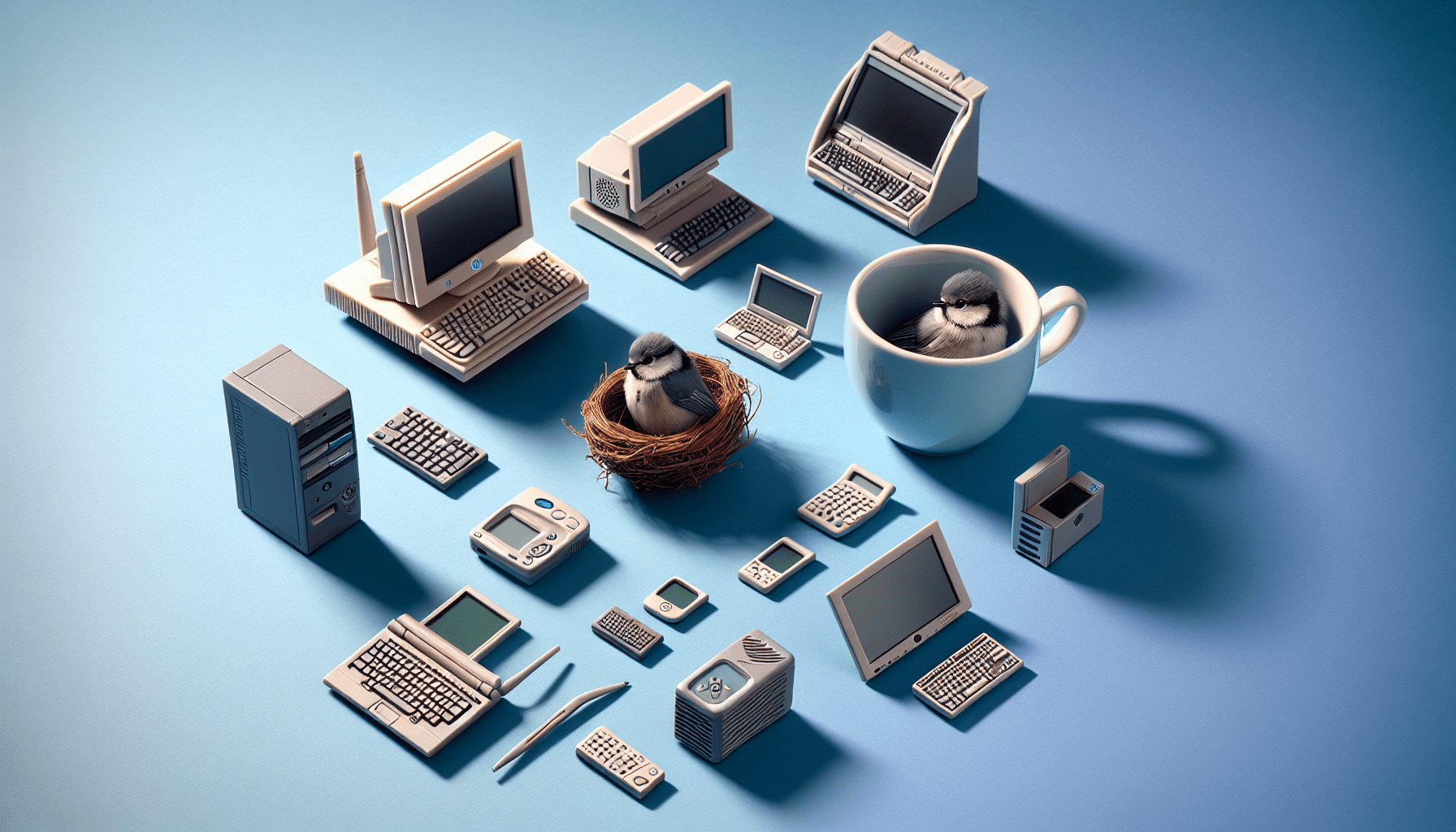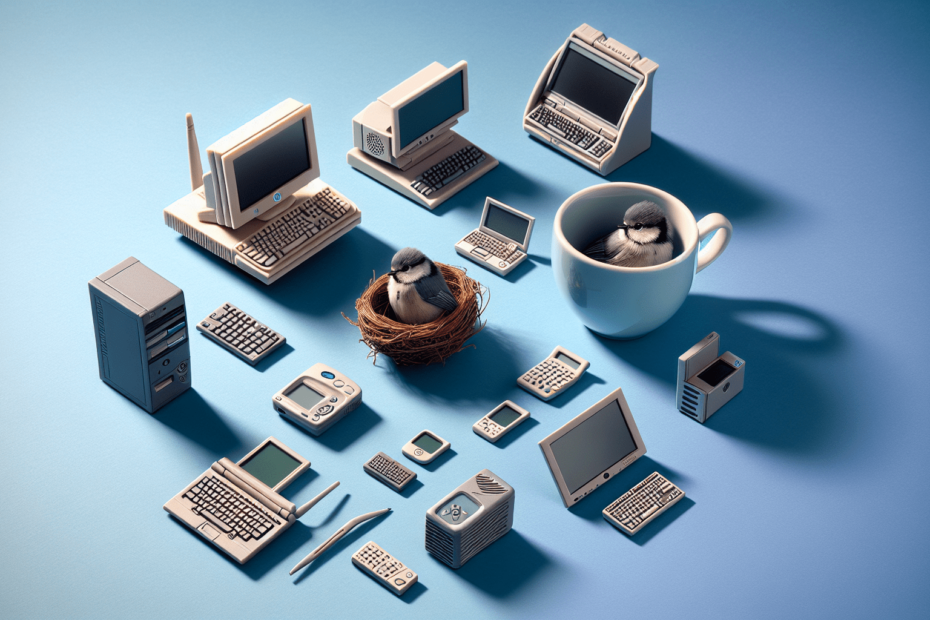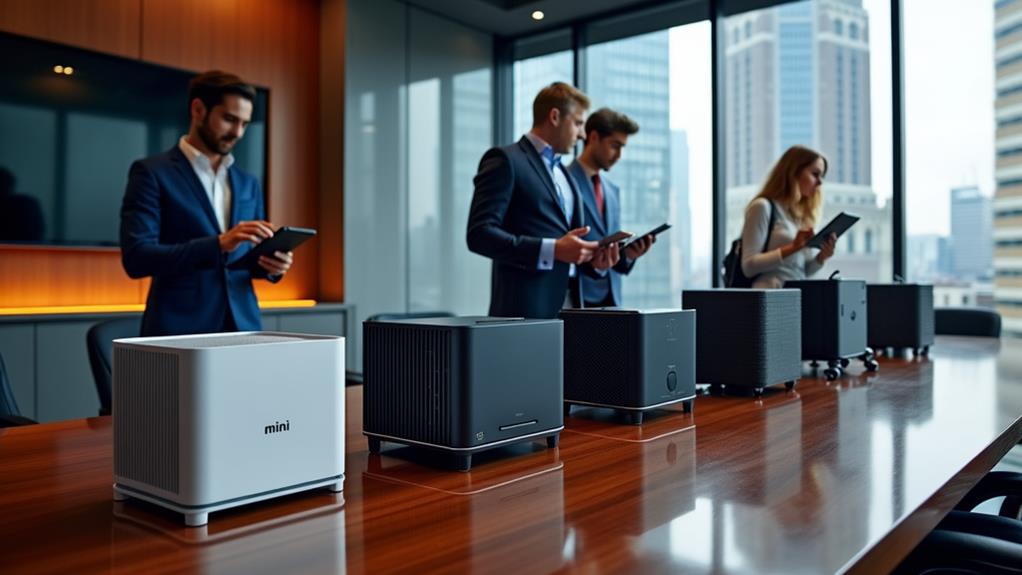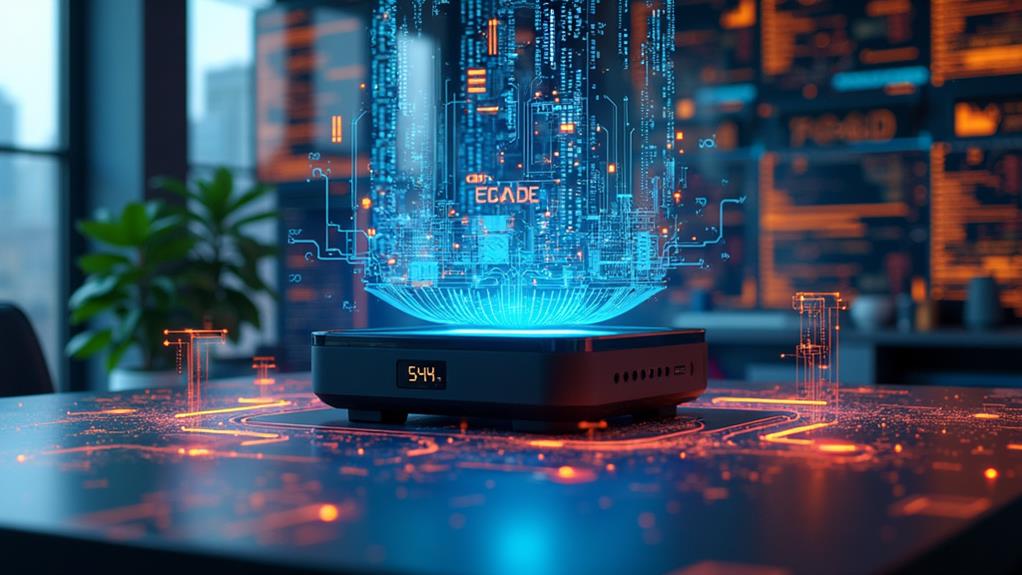



If you’ve ever wondered about the different types of mini computers and what they actually mean, you’ve come to the right place. In this article, we will explore the fascinating world of mini computers, their various types, and the unique functions they serve. Whether you’re a tech enthusiast or simply curious about these compact yet powerful devices, we’ll break it down for you in a friendly and easily understandable manner. So sit back, relax, and let’s embark on an enlightening journey into the meaning of types of mini computer.
Types of Mini Computer

Definition of Mini Computer
Mini computers, also known as mid-range computers or mini-mainframe computers, are a type of computer that falls between the large mainframe computers and the personal computers or microcomputers. These computers typically offer more processing power and memory than microcomputers but are smaller and less expensive than mainframe computers. They are designed to handle complex tasks and support multiple users simultaneously.
Main Characteristics of Mini Computers
Mini computers have several key characteristics that distinguish them from other types of computers. Firstly, their size is smaller compared to mainframe computers, making them more portable and easier to install in limited spaces. Secondly, mini computers have a moderate level of processing power, offering a balance between microcomputers and mainframe computers. They also have a higher memory capacity than microcomputers, allowing them to handle more complex tasks. Additionally, mini computers come equipped with a range of I/O ports to facilitate connectivity with peripheral devices. Lastly, mini computers utilize an operating system to manage resources and provide an interface for users to interact with the computer.
Advantages of Mini Computers
Mini computers offer several advantages that make them an appealing choice for various applications. Firstly, their compact size and portability allow for easy installation and relocation, making them suitable for environments with limited space. Additionally, mini computers are generally less expensive than mainframe computers, making them a more cost-effective solution for organizations that require significant computational power. Furthermore, mini computers are highly efficient in terms of energy consumption, reducing operational costs and environmental impact. Their scalability is another advantage, as they can be easily upgraded or expanded to accommodate increasing workloads. Lastly, mini computers are versatile and can be customized to suit specific applications and environments.
Disadvantages of Mini Computers
While mini computers have their advantages, they also have some limitations that need to be considered. One of the main disadvantages is their limited processing power compared to mainframe computers. This means they may not be suitable for processing intensive tasks or running high-end applications. Mini computers also have less memory capacity, which can limit their ability to handle large datasets or perform complex calculations. Additionally, their I/O capabilities are typically reduced compared to mainframe computers, affecting the number and types of peripheral devices that can be connected. Hardware and software limitations are also a concern, as mini computers may not support the latest technologies or software applications. Lastly, mini computers may not be suitable for high-end applications that require extensive computational resources or specialized features.

Types of Mini Computers Based on Size
Microcomputers
Microcomputers, also known as personal computers or PCs, are the most common type of mini computer. They are designed to be used by individuals or small groups and are commonly found in homes, offices, and schools. Microcomputers come in various form factors, including desktops, laptops, and tablets, offering different sizes and portability options.
Workstations
Workstations are more powerful mini computers designed for specialized tasks such as graphic design, engineering, and scientific simulations. They offer higher performance, larger memory capacities, and advanced graphics capabilities. Workstations are commonly used in industries like architecture, digital media production, and scientific research.
Embedded Systems
Embedded systems are mini computers built into other devices or machines to perform specific functions. They are designed for integration within larger systems such as automobiles, industrial equipment, and appliances. Embedded systems are often used in control systems, real-time monitoring, and automation.
Single-Board Computers
Single-board computers are complete computer systems built on a single circuit board. These mini computers offer a compact form factor and low power consumption. They are commonly used in hobbyist projects, educational settings, and Internet of Things (IoT) applications.
Wearable Computers
Wearable computers are miniaturized computers that can be worn or carried by the user. They are typically used for health monitoring, fitness tracking, and augmented reality applications. Wearable computers include devices like smartwatches, fitness trackers, and smart glasses.
Types of Mini Computers Based on Functionality
General-Purpose Mini Computers
General-purpose mini computers are designed to handle a wide range of tasks and are suitable for general computing purposes. They are commonly used in offices, homes, and educational institutions for tasks such as word processing, web browsing, and multimedia playback.
Special-Purpose Mini Computers
Special-purpose mini computers are tailored to specific applications or industries. These computers are optimized for a particular task or function, such as point-of-sale systems, medical equipment, or industrial control systems. Special-purpose mini computers offer specialized hardware and software configurations to meet specific requirements.
Network Mini Computers
Network mini computers are designed to serve as network servers or routers. They are optimized for handling network traffic, managing connections, and providing network services. Network mini computers play a crucial role in the infrastructure of computer networks, enabling communication and data sharing among multiple devices.
Multi-User Mini Computers
Multi-user mini computers are capable of supporting multiple users concurrently. These systems provide centralized computing resources that can be accessed by multiple users over a network. Multi-user mini computers are commonly used in business environments or educational institutions where several individuals need to access shared resources simultaneously.
Stand-Alone Mini Computers
Stand-alone mini computers are independent systems that do not rely on a network or external resources. These computers are self-contained and can operate without the need for connectivity. Stand-alone mini computers are often used in isolated or remote environments, such as research stations or field work sites.
Types of Mini Computers Based on Architecture
Von Neumann Architecture
Von Neumann architecture is a classical computer architecture where instructions and data are stored in the same memory space. This type of architecture is commonly used in mini computers and other computer systems. It allows for sequential execution of instructions and efficient memory utilization.
Harvard Architecture
Harvard architecture is another computer architecture used in mini computers. In this architecture, instructions and data are stored in separate memory spaces, allowing for parallel processing. Harvard architecture is often used in embedded systems and specialized applications requiring high performance.
Modified Harvard Architecture
Modified Harvard architecture combines elements of both Von Neumann and Harvard architectures. It allows for separate instruction and data memory spaces, providing the benefits of parallel processing while still allowing flexibility in program execution. Modified Harvard architecture is commonly used in mini computers that require a balance of performance and flexibility.
Types of Mini Computers Based on Usage
Personal Mini Computers
Personal mini computers, also known as personal computers, are designed for individual use. They are commonly used for personal productivity tasks, entertainment, and communication. Personal mini computers include desktops, laptops, and tablets.
Industrial Mini Computers
Industrial mini computers are designed to withstand harsh environments and operate reliably in industrial settings. These computers are used in manufacturing facilities, chemical plants, and other industrial applications. Industrial mini computers often come with ruggedized enclosures and specialized interfaces for industrial equipment integration.
Scientific Mini Computers
Scientific mini computers are designed for scientific research and data analysis. They offer high-performance computing capabilities and are used in various scientific fields, such as physics, chemistry, and genomics. Scientific mini computers enable complex simulations, data modeling, and data visualization.
Research Mini Computers
Research mini computers are specialized systems used in academic or scientific research projects. These computers are optimized for specific research tasks, such as data analysis, simulations, or computational modeling. Research mini computers are often used in universities, research institutions, and laboratories.
Educational Mini Computers
Educational mini computers are designed for educational purposes, primarily targeting students and teachers. These computers are typically affordable and user-friendly, providing educational software and tools to support learning. Educational mini computers are used in classrooms, libraries, and other educational settings.
Examples of Mini Computers
There are numerous examples of mini computers available in the market. Some popular examples include the Raspberry Pi single-board computer, the Apple Mac Mini, the Dell Precision workstation, the Arduino microcontroller board, and the Fitbit fitness tracker. These examples represent the diverse range of mini computers based on size, functionality, and usage.
Future of Mini Computers
The future of mini computers is exciting, with several advancements and possibilities on the horizon. One of the key areas of development is miniaturization, as mini computers continue to become smaller, more compact, and more powerful. This trend enables mini computers to be integrated into smaller devices, such as wearable technology and Internet of Things (IoT) devices.
Increased processing power and memory are also expected in the future of mini computers. As technology advances, mini computers will be able to handle more complex tasks and applications, making them even more versatile and capable. Integration with emerging technologies, such as artificial intelligence (AI) and machine learning, will further enhance the capabilities of mini computers, enabling them to process and analyze large volumes of data in real-time.
Furthermore, the expansion of applications for mini computers is expected to continue. With the growing demand for computational power in various industries, mini computers will play a vital role in fields like healthcare, finance, autonomous vehicles, and smart cities. The ability to handle specialized applications and cater to specific industries will further drive the adoption of mini computers.
However, the future of mini computers also presents potential challenges. As mini computers become more powerful and interconnected, concerns related to security and privacy may arise. Safeguarding data and ensuring the integrity of mini computer systems will be crucial in an increasingly connected world. Additionally, the rapid pace of technological advancement may result in hardware and software obsolescence, requiring regular upgrades and replacements.
In conclusion, the types of mini computers encompass a wide range of sizes, functionalities, architectures, and usages. Mini computers offer a balance between processing power, size, and cost, making them suitable for various applications and environments. As technology progresses, mini computers will continue to evolve, providing increased capabilities, integration with emerging technologies, and expanded applications. The future of mini computers is promising, and they are expected to play a significant role in advancing computing technology in the years to come.
Disclosure: As an Amazon Associate, I earn from qualifying purchases.





